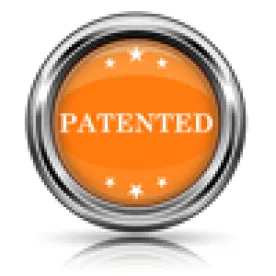Takeaway: Parties are not permitted to raise new arguments or evidence at oral hearing.
In its Decision, the Board held that each of challenged claims 1-15 of the ’879 patent was unpatentable. In particular, the Board found that Petitioner had shown by a preponderance of the evidence that claims 1-7 and 15 were unpatentable over Kammerl and Iwami; that claims 8, 9, and 11–13 were unpatentable over Kammerl, Iwami, and Kobayashi; that claim 10 was unpatentable over Kammerl, Iwami, Kobayashi, and Chau; and that claim 14 was unpatentable over Kammerl, Iwami, and Gordon.
The ’067 patent relates to methodology for enabling a data network such as the Internet “to function like a telecommunications network.” The Board did not explicitly construe any claim term in reaching its ultimate conclusions.
Petitioner had objected to a number of arguments that Patent Owner had relied upon at the oral hearing. The purportedly new arguments included reliance on previously unmentioned case law authority, as well as arguments regarding alleged unpredictable results. The Board for the most part sustained Petitioner’s objection, finding that Petitioner was not given advance opportunity to review and address these new arguments.
Patent Owner had asserted that Petitioner’s Reply contained a new argument relating to the ’879 patent’s alleged failure to address issues of sending voice data over IP, which was alleged to provide support for the argument by Petitioner that IP quality problems were not at issue at the time of invention. The Board disagreed with Patent Owner on this point, finding that Petitioner’s argument was properly responsive to “teaching away” arguments set forth in Patent Owner’s Response.
Regarding obviousness, the Board noted that “independent claim 1 of the ’879 patent differs from Kammerl only in that the data network disclosed by Kammerl does not use an internet protocol and, thus, Kammerl does not disclose that the recited second format is an internet protocol,” and that “independent claim 1 of the ’879 patent differs from Iwami in that Iwami only discloses a single conversion from a telecommunication protocol to an internet protocol.” Although Patent Owner had argued that the focus in Kammerl on the reduction of lag results taught away from any combination that would increase lag times, the Board was not persuaded. In doing so, the Board cited In re Gurley, 27 F.3d 551, 553 (Fed. Cir. 1994), for the proposition that “a reference will teach away if it suggests that the line of development flowing from the reference’s disclosure is unlikely to be productive of the result sought by the applicant”) (emphasis added by the Board).
Level 3 Communications, LLC v. AIP Acquisition LLC, IPR2013-00296
Paper 42: Final Written Decision
Dated: October 8, 2014
Patent: 7,724,879 B2
Before: Jameson Lee, Howard B. Blankenship, and Justin Busch
Written by: Busch
Related Proceedings: AIP Acquisition LLC v. Level 3 Communications, LLC, Civ. Action No. 12-617 (D. Del.); AIP Acquisition LLC v. iBasis, Inc., Civ. Action No. 12-616 (D. Del.); AIP Acquisition LLC v. Time Warner Cable Inc., Civ. Action No. 12-01692 (D. Del.); AIP Acquisition LLC v. Cox Communications Inc., Civ. Action No. 12-01691 (D. Del.); AIP Acquisition LLC v. Comcast Corp., Civ. Action No. 12-01690 (D. Del.); AIP Acquisition LLC v. Cablevision Systems Corp., Civ. Action No. 12-01688 (D. Del.); AIP Acquisition LLC v. Charter Communications Inc., Civ. Action No. 12-01689 (D. Del.); and Cisco Sys., Inc. v. AIP Acquisition LLC, IPR2014-00247 (PTAB)



 />i
/>i

